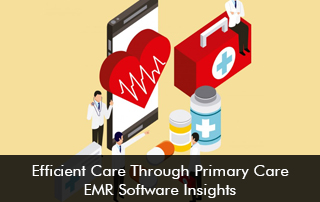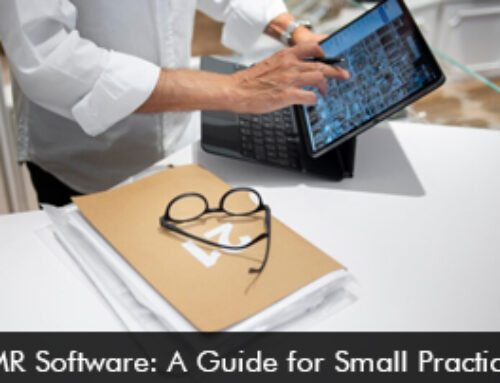The integration of EMR software has transformed primary care, enhancing the efficiency and effectiveness of healthcare delivery. From the first point of contact to overall healthcare management, Electronic Medical Records (EMR) Software is with primary caregivers throughout.
Understanding Primary Care Challenges
Primary care serves as the foundation of the healthcare system, offering comprehensive and continuous care for individuals of all ages. From routine check-ups to managing chronic conditions, primary care physicians are at the forefront of patient care. However, there are numerous challenges, including time constraints, administrative burdens, and the need for seamless coordination between healthcare providers.
Time Constraints and Administrative Burdens
Primary care physicians often find themselves pressed for time during patient consultations. The need to review medical histories, order tests, prescribe medications, and document patient encounters can be time-consuming. The administrative burden of paperwork, billing, and compliance adds to the challenges, leaving physicians with limited time for direct patient care.
Coordination and Communication Challenges
Effective healthcare requires collaboration among various healthcare providers, specialists, and support staff. Lack of seamless communication and coordination can lead to fragmented care, compromising patient outcomes. Primary care physicians need a comprehensive view of a patient’s medical history and ongoing treatments to make informed decisions. This can be challenging without a unified system.
The Role of EMR Software in Primary Care
Electronic Health Record (EHR) software has emerged as a transformative tool in addressing the challenges faced by primary care. These digital platforms offer a centralized repository for patient information, facilitating efficient data management, collaboration, and communication. Let’s delve into the key insights that EMR software brings to the realm of primary care.
EMR Software Streamlines Patient Data Management
EMR software allows primary care providers to consolidate and organize patient data in a centralized system. This includes medical histories, diagnostic test results, treatment plans, and medication records. Having all this information readily accessible saves time during patient consultations. It also ensures that physicians have a comprehensive understanding of the patient’s health status.
Moreover, EHR software enables real-time updates, ensuring that healthcare providers have access to the most recent and relevant patient information. This is especially critical in emergency situations or when dealing with rapidly evolving health conditions.
EMR Software Enhances Clinical Decision Support
One of the significant advantages of EMR software is the inclusion of clinical decision-support tools. These tools assist in making informed decisions by providing evidence-based guidelines, alerts for potential drug interactions, and reminders for screenings. This not only improves the quality of care but also reduces the likelihood of errors.
For instance, if a patient with a chronic condition visits, the EHR software can prompt the physician to schedule necessary follow-up appointments, order specific tests, or adjust medications based on the latest clinical guidelines. This proactive approach contributes to better disease management and preventive care.
Improved Communication and Coordination
EMR systems facilitate seamless communication and coordination among healthcare providers. Integration with other healthcare facilities, laboratories, and pharmacies ensures that information flows smoothly across the healthcare continuum. Primary care physicians can share patient records, test results, and treatment plans with specialists, fostering a collaborative approach to patient care.
In addition, features such as secure messaging within the EMR system enable efficient communication between healthcare team members. This eliminates the delays associated with traditional communication methods, such as phone calls and faxing, leading to quicker decision-making and improved patient outcomes.
Time Efficiency and Workflow Optimization
By automating routine tasks and documentation processes, EMR software significantly reduces the administrative burden on primary care physicians. Templates for common encounters, electronic prescribing, and automated billing functionalities streamline workflows, allowing physicians to focus more on patient care.
Time efficiency is further enhanced through features like voice recognition and mobile access, enabling physicians to update patient records and complete tasks on the go. This flexibility not only saves time but also contributes to better work-life balance for healthcare providers.
EMR Software Empowers Patient Engagement
EMR software extends beyond the healthcare provider and actively involves patients in their care. Patient portals integrated with EMR systems empower individuals to access their medical records, schedule appointments, and communicate with their healthcare team. This increased engagement promotes a patient-centered approach to care, where individuals actively participate in decision-making and management of their health.
Moreover, features like automated appointment reminders and educational resources within the patient portal contribute to better adherence to treatment plans and preventive measures.
Challenges and Considerations
While EMR software brings substantial benefits to primary care, it is essential to acknowledge and address certain challenges. These may include concerns related to data security, interoperability between different systems, and the potential for physician burnout due to increased screen time. Healthcare organizations must invest in robust training programs and support systems to ensure the effective implementation and utilization of EMR software.






